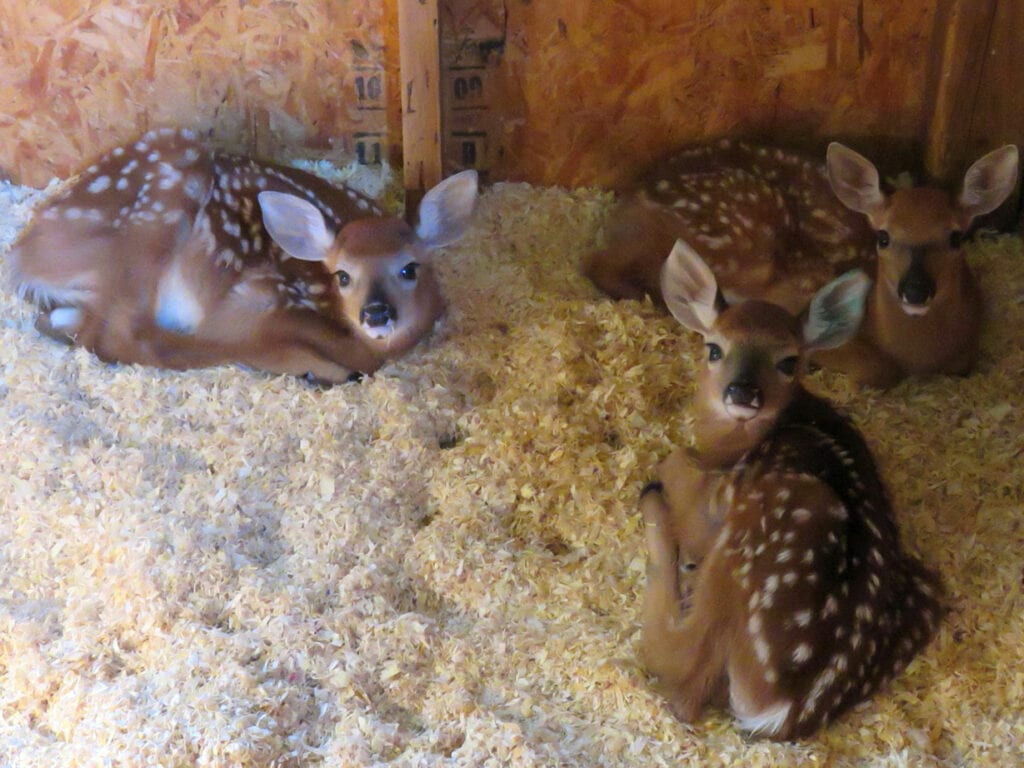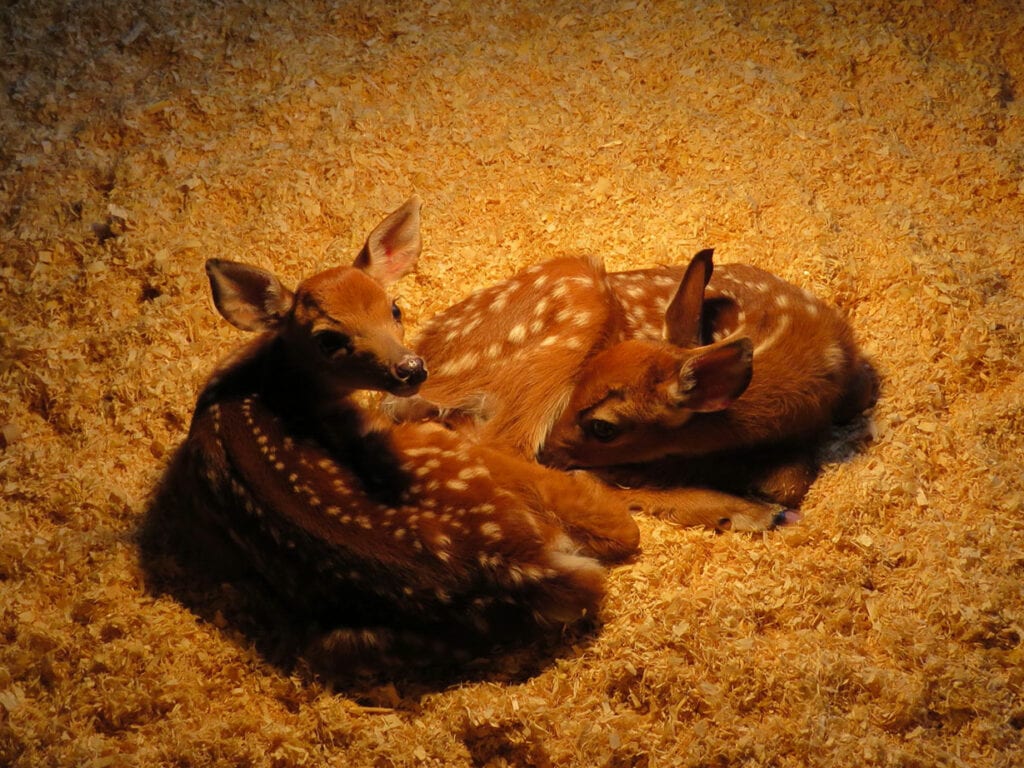When visiting at the Duck Pond Wildlife Rehab Center in March, I asked Donald Cote what we should submit for the April column. With no hesitation whatsoever, Don said spring is the time to remind people that not all young animals that appear orphaned need rescuing. That makes this month’s column easy for me as I can use Carleen Cote’s words of many years ago, and it gives me pleasure to pay homage to her years of rehab work by doing so:
“With the return of warmer days, our feathered friends are returning from their southern hiatus and native wildlife are becoming more active. This is an appropriate time for a reminder about whether or not young wildlife that appear to need rescuing really need human intervention.
White-tail fawns are often rescued when they should be left where they were found. A very young fawn will not move until given a signal from its mother. It has no odor, so if it is found by a dog, coyote, or other potential predator, it’s by accident, not from a scent. The doe does not remain with her fawn(s) at all times; she leaves to feed herself and may not return for several hours.
If you’re walking in the fields and woods and spot a fawn, don’t immediately assume that it needs to be rescued. Mark the spot where it was seen and leave; return after a few hours or the next day. If the fawn is in the exact same spot, it’s probably safe to assume something has happened to the doe. Contact a game warden or rehabber and follow the advice given.

Fawns at Duck Pond by Jayne Winters
If you find a young bird on the ground and no nest is found, make a substitute from a berry box or basket; be sure there are holes for drainage and hang it in a tree close to the spot where the bird was found. The adults will respond to the feeding calls of their youngsters. If cats are prowling or stalking birds, especially when there may be young birds in a nest that can’t survive without being fed, the cat should be confined rather than removing the birds. Fledglings — young birds that are feathered and out of the nest — need time to master the art of flying. Though they may spend time on the ground, this is not necessarily an indication they need human intervention. Observe whether there are adult birds flying around as they could be the parents, bringing food to the young or coaxing them to take their first flight.
Of course, there are times when rescue is necessary such as when an adult female has died, but her young survive, or when young animals have been observed for some time with no adult arriving to care for them and lead them to safety. If you do rescue wildlife, as cute as they may be, bring them to someone who has the necessary permits and knowledge to give them a greater chance of survival. If you’re in doubt about the need to rescue any bird or animal, or have questions about the critters we enjoy and for which we are concerned, please call a local rehabber or warden.”
The past couple of months have been particularly difficult for the Duck Pond Center as Donald and one of the volunteers with almost 20 years’ experience have had unexpected health issues requiring hospitalization (both are now home). This upcoming spring and summer will require the assistance of other rehabbers to cover the anticipated volume of admissions, so we ask that you check the following websites to see if there is a rehabber closer to you to help make the work more manageable at Duck Pond: www.mainevetmed.org/wildlife-rehabilitation or www.maine.gov/ifw/fish-wildlife/wildlife/living-with-wildlife/orphaned-injured-wildlife/index.html

Fawns at Duck Pond by Jayne Winters
Thank you.
Donald Cote operates the Duck Pond Wildlife Care Center on Rte. 3 in Vassalboro. It is a nonprofit federal and state permitted rehab facility that is supported by his own resources and outside donations. Mailing address: 1787 North Belfast Ave., Vassalboro, ME 04989 TEL: (207) 445-4326 EMAIL: thewildlifecarecenter@gmail.com
—by Jayne Winters, Natural Resources Council of Maine member from South China, Maine
Critter Chatter also appears monthly in the Town Line newspaper.










Leave a Reply